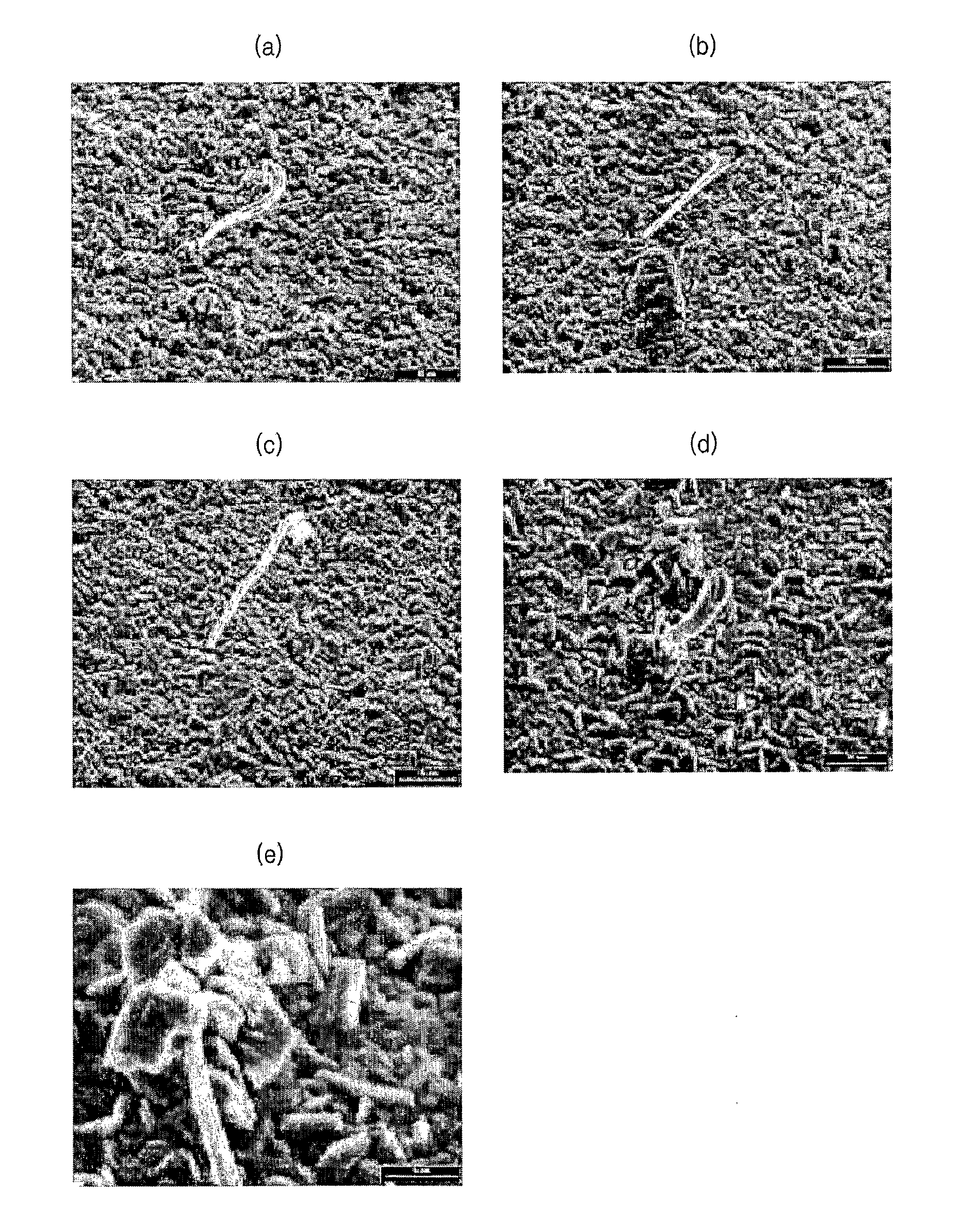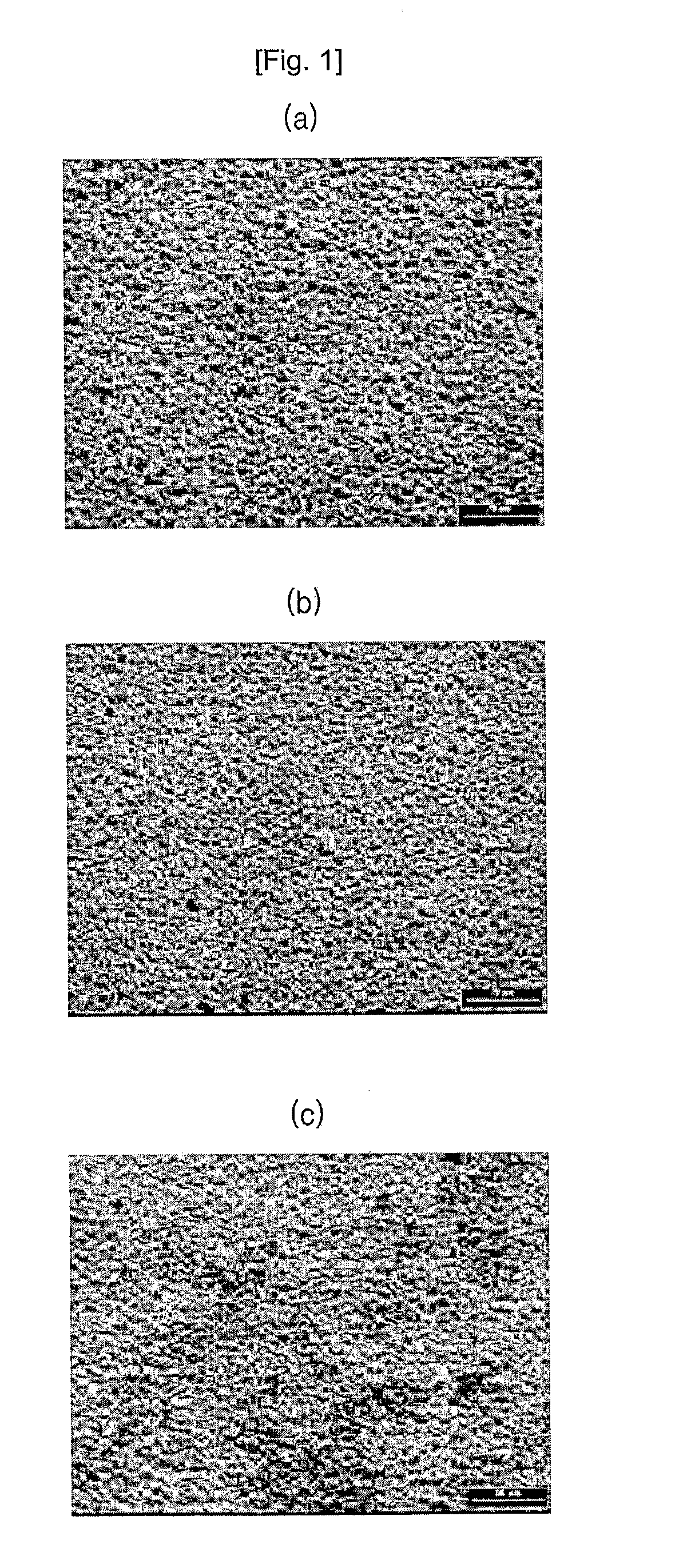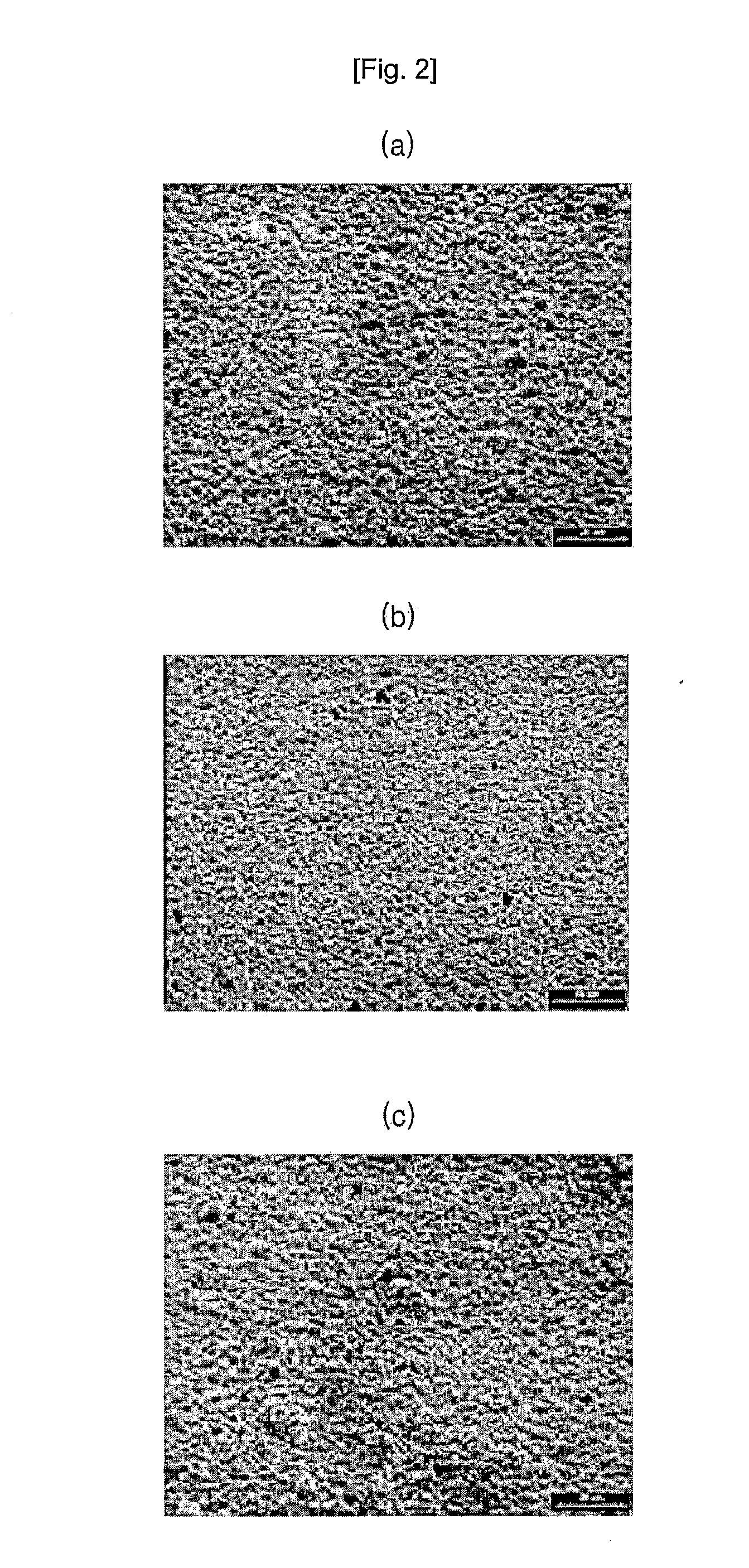Sn-b plating solution and plating method using it
- Summary
- Abstract
- Description
- Claims
- Application Information
AI Technical Summary
Benefits of technology
Problems solved by technology
Method used
Image
Examples
embodiment 1
[0048]A plating solution containing 15 g / L of tin sulfate, 30 ml / L of H2SO4, 10 g / L of cresolsulfonic acid, 0.1 g / L of β-Naphtol, and 0.1 g / L of gelatin is produced.
[0049]In Experiment 1, 0.1 g / L of DMAB is further added to the plating solution, in Experiment 2, 0.5 g / L of DMAB is further added to the plating solution, and in Experiment 3, 3 g / L of DMAB is further added to the plating solution.
[0050]Plating is performed under the same plating conditions described above. In other words, a Cu plate is used as a cathode, soluble Sn is used as an anode, the current density is 1 A / dm2, and the plating temperature is normal temperature.
[0051]The plating layers of Experiments 1 through 3 are stored at room temperature for 12 months, and then it is determined whether whisker is generated on the surface of the plating layers.
[0052]FIGS. 1 (a) through (c) are scanning electron microscope (SEM) photographic images respectively illustrating surface states of the plating layers in Experiments 1 ...
embodiment 2
[0053]A plating solution containing 30 g / L of tin sulfate, 50 ml / L of H2SO4, 20 g / L of cresolsulfonic acid, 0.3 g / L of β-Naphtol, and 0.5 g / L of gelatin is produced.
[0054]In Experiment 4, 0.1 g / L of DMAB is further added to the plating solution, in Experiment 5, 0.5 g / L of DMAB is further added to the plating solution, and in Experiment 6, 3 g / L of DMAB is further added to the plating solution.
[0055]Plating is performed under the same plating conditions of Example 1. The is plating layers of Experiments 4 through 6 are stored at room temperature for 12 months, and then it is determined whether whisker is generated on the surface of the plating layers.
[0056]FIGS. 2 (a) through (c) are SEM photographic images respectively illustrating surface states of the plating layers in Experiments 4 through 6 after the room temperature storage test.
embodiment 3
[0057]A plating solution containing 50 g / L of tin sulfate, 70 ml / L of H2SO4, 40 g / L of cresolsulfonic acid, 0.5 g / L of β-Naphtol, and 1.0 g / L of gelatin is produced.
[0058]In Experiment 7, 0.1 g / L of DMAB is further added to the plating solution, in Experiment 8, 0.5 g / L of DMAB is further added to the plating solution, and in Experiment 9, 3 g / L of DMAB is further added to the plating solution.
[0059]Plating is performed under the same plating conditions of Example 1. The plating layers of Experiments 7 through 9 are stored at room temperature for 12 months, and then it is determined whether whisker is generated on the surface of the plating layers.
[0060]FIGS. 3 (a) through (c) are SEM photographic images respectively illustrating surface states of the plating layers in Experiments 7 through 9 after the room temperature storage test.
PUM
| Property | Measurement | Unit |
|---|---|---|
| Density | aaaaa | aaaaa |
| Density | aaaaa | aaaaa |
| Density | aaaaa | aaaaa |
Abstract
Description
Claims
Application Information
 Login to View More
Login to View More - R&D
- Intellectual Property
- Life Sciences
- Materials
- Tech Scout
- Unparalleled Data Quality
- Higher Quality Content
- 60% Fewer Hallucinations
Browse by: Latest US Patents, China's latest patents, Technical Efficacy Thesaurus, Application Domain, Technology Topic, Popular Technical Reports.
© 2025 PatSnap. All rights reserved.Legal|Privacy policy|Modern Slavery Act Transparency Statement|Sitemap|About US| Contact US: help@patsnap.com



